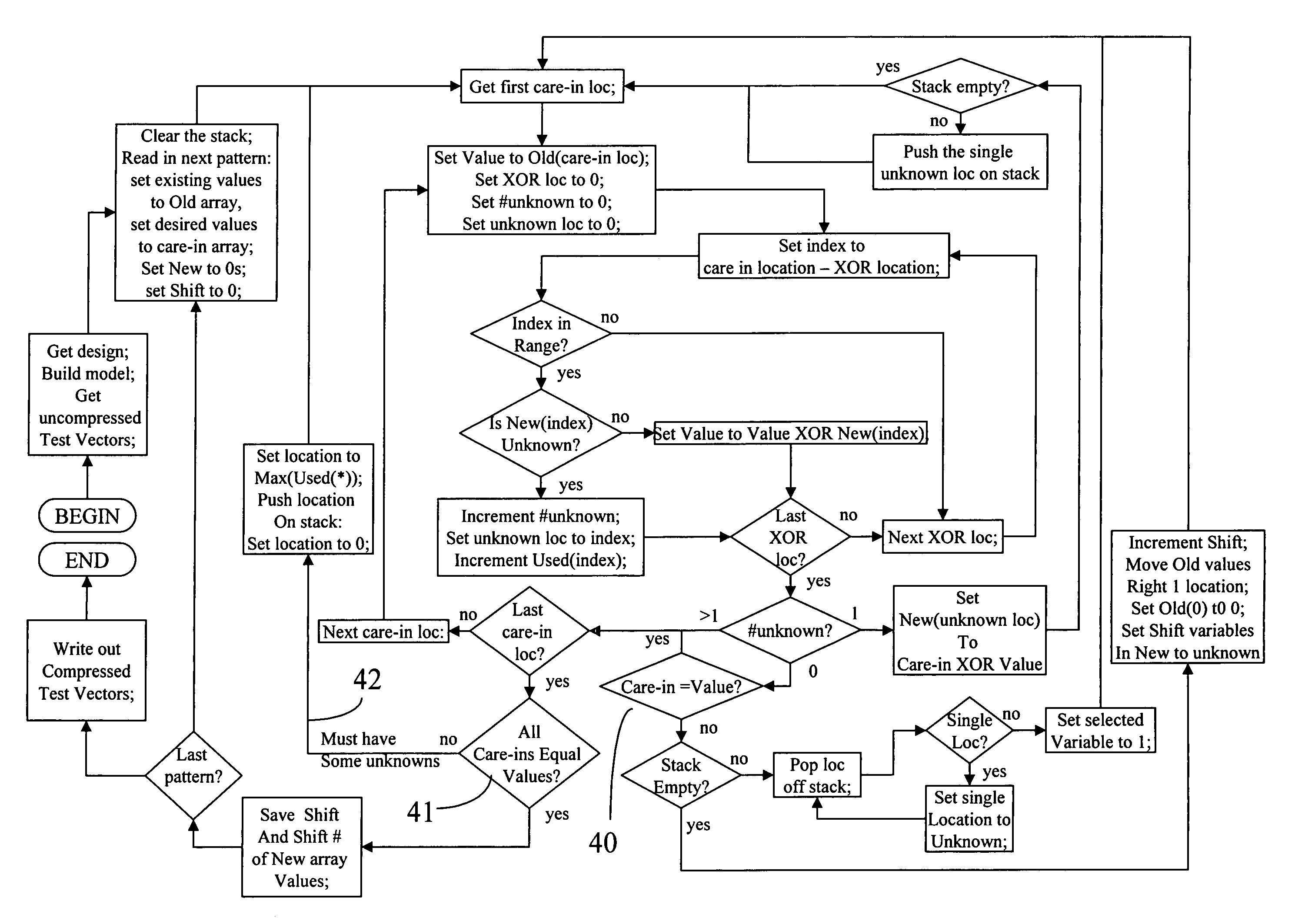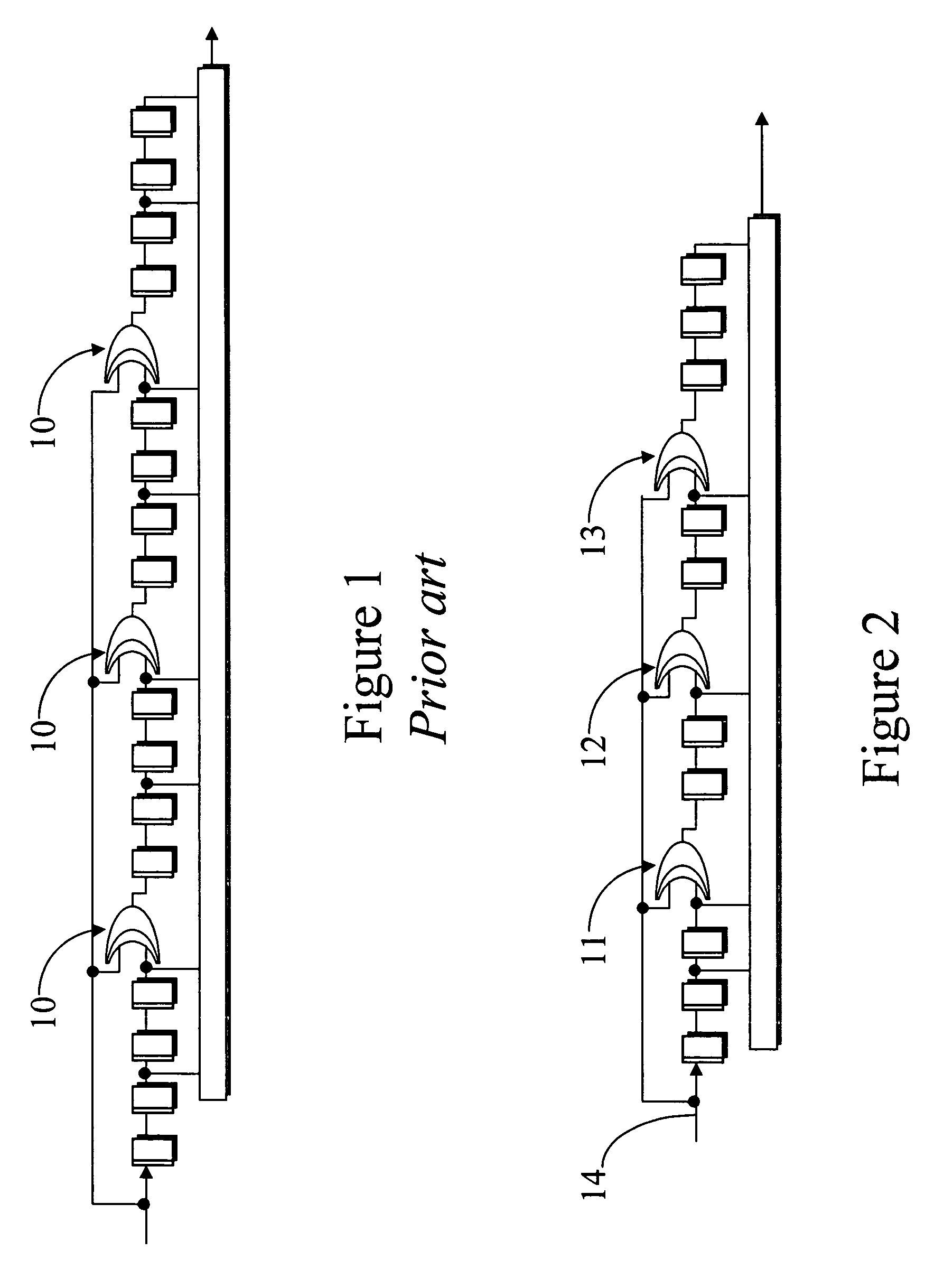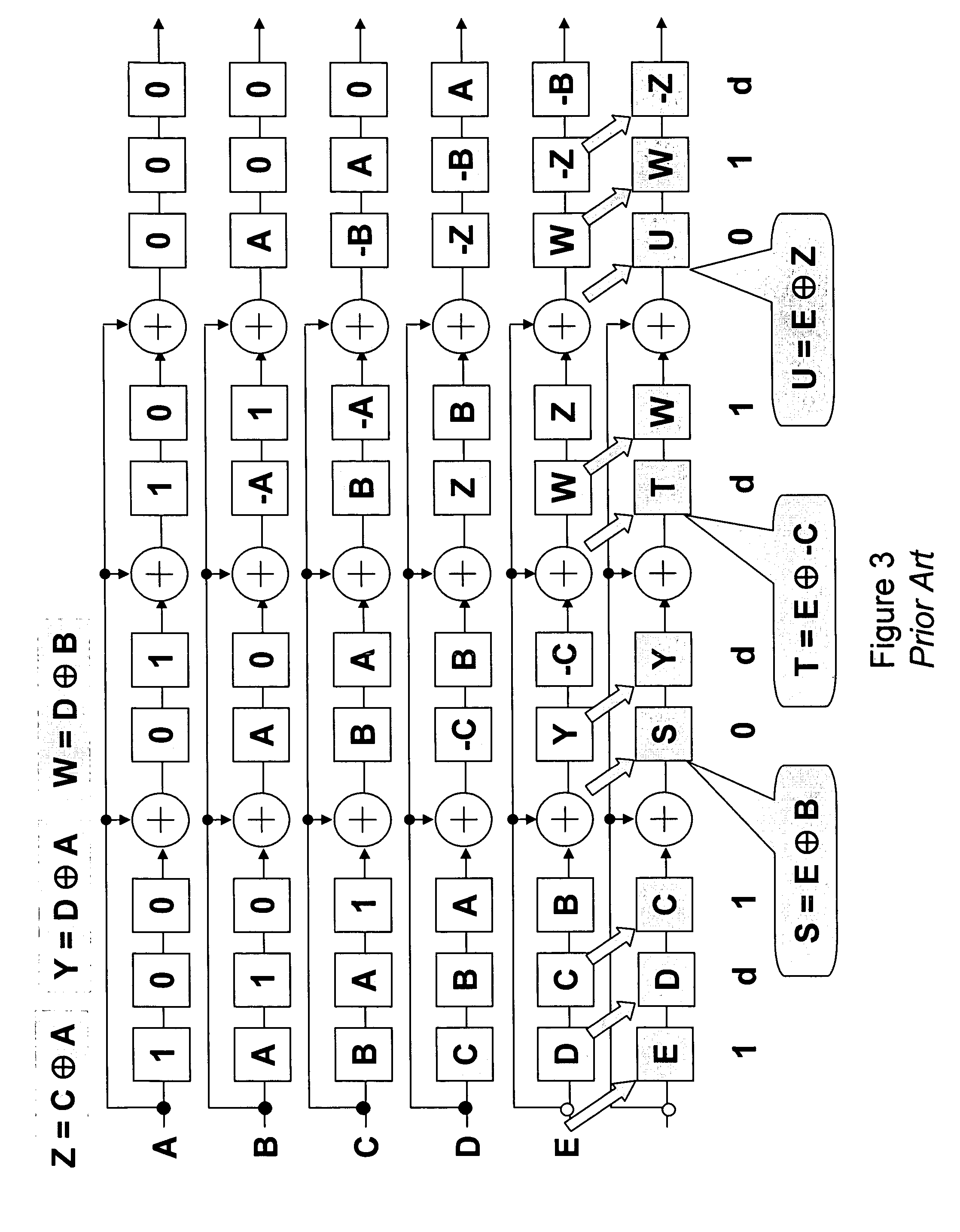Variable clocked scan test improvements
a technology of deterministic tests and scans, applied in error detection/correction, program control, instruments, etc., can solve the problems of reducing the computation time to arrive at a compressed solution, and reducing the computation time required to achieve the compression of test patterns. , to achieve the effect of limiting the clocking overhead of deterministic tests and reducing the number of required shifts
- Summary
- Abstract
- Description
- Claims
- Application Information
AI Technical Summary
Benefits of technology
Problems solved by technology
Method used
Image
Examples
Embodiment Construction
[0040]The prior art in FIG. 3, from U.S. patent application Ser. No. 10 / 750,949, depicts five shift cycles of forward symbolic simulation on a 10 bit long scan string broken into four segments by the addition of three exclusive-or gates, symbolically shown as a circle with a plus in it. This placement of exclusive-or gates is the same as shown in FIG. 2. The diagram in FIG. 3 shows the simulation states on the structure from an initial state on the top row through five consecutive shift cycles, to the bottom row. The simulation uses symbolic values A, B, C, D, and E applied on successive shifts, at the Scan_In port and shows the next state of the scan-chain after each shift cycle. On the 3rd shift (fourth row) a variable Z is introduced, on the 4th shift variables Y and W are introduced, and variables S, T and U are introduced on the fifth (and last) shift cycle. These variables are used as placeholders for the expressions they are equivalent to. This example demonstrates that setti...
PUM
 Login to View More
Login to View More Abstract
Description
Claims
Application Information
 Login to View More
Login to View More - R&D
- Intellectual Property
- Life Sciences
- Materials
- Tech Scout
- Unparalleled Data Quality
- Higher Quality Content
- 60% Fewer Hallucinations
Browse by: Latest US Patents, China's latest patents, Technical Efficacy Thesaurus, Application Domain, Technology Topic, Popular Technical Reports.
© 2025 PatSnap. All rights reserved.Legal|Privacy policy|Modern Slavery Act Transparency Statement|Sitemap|About US| Contact US: help@patsnap.com



